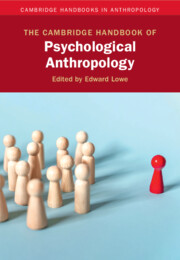Book contents
- The Cambridge Handbook of Psychological Anthropology
- Cambridge Handbooks in Anthropology
- The Cambridge Handbook of Psychological Anthropology
- Copyright page
- Dedication
- Contents
- Figures
- Table
- Contributors
- 1 Psychological Anthropology in its Second Century
- Part I Theoretical Foundations
- 2 Cognitive Foundations and Cultural Models
- 3 Linguistic and Narrative-Based Foundations
- 4 Phenomenological Foundations
- 5 Psychoanalytic Foundations of Psychological Anthropology
- Part II Methodological Innovations
- Part III Lifespan Development in Diverse Sociocultural Contexts
- Part IV Body, Emotion, Self, and Experience
- Part V Postcolonial and Political–Economic Interventions
- Index
- References
3 - Linguistic and Narrative-Based Foundations
from Part I - Theoretical Foundations
Published online by Cambridge University Press: 22 October 2025
- The Cambridge Handbook of Psychological Anthropology
- Cambridge Handbooks in Anthropology
- The Cambridge Handbook of Psychological Anthropology
- Copyright page
- Dedication
- Contents
- Figures
- Table
- Contributors
- 1 Psychological Anthropology in its Second Century
- Part I Theoretical Foundations
- 2 Cognitive Foundations and Cultural Models
- 3 Linguistic and Narrative-Based Foundations
- 4 Phenomenological Foundations
- 5 Psychoanalytic Foundations of Psychological Anthropology
- Part II Methodological Innovations
- Part III Lifespan Development in Diverse Sociocultural Contexts
- Part IV Body, Emotion, Self, and Experience
- Part V Postcolonial and Political–Economic Interventions
- Index
- References
Summary
The chapter reviews and systematizes the scholarly work on how “language” and “narrative” shape culturally mediated psychological processes. A challenge is to consider framings that see “language” as either a cause or effect of “psyche,” framings that limit how we consider how “culture” or “ideology” mediate relationships between language and psyche. The authors develop an approach that considers temporal processes across which language, culture, and psyche are co-constituting. The approach systematizes a broad literature in terms of the varieties of co-constitution proposed for language, culture, and psyche: processes that privilege language or psyche in producing relatively stable relationships across time between these three terms, processes that privilege language or psyche in producing highly emergent relationships, and processes that imagine processes of mediation within interactional events, across events, and/or across generations and historical time. The framework unites discussions that have been disconnected, provides conceptual delimitations for that discussion, and highlights how psychological anthropologists can contribute to an interdisciplinary conceptual space.
Keywords
Information
- Type
- Chapter
- Information
- The Cambridge Handbook of Psychological Anthropology , pp. 62 - 89Publisher: Cambridge University PressPrint publication year: 2025
